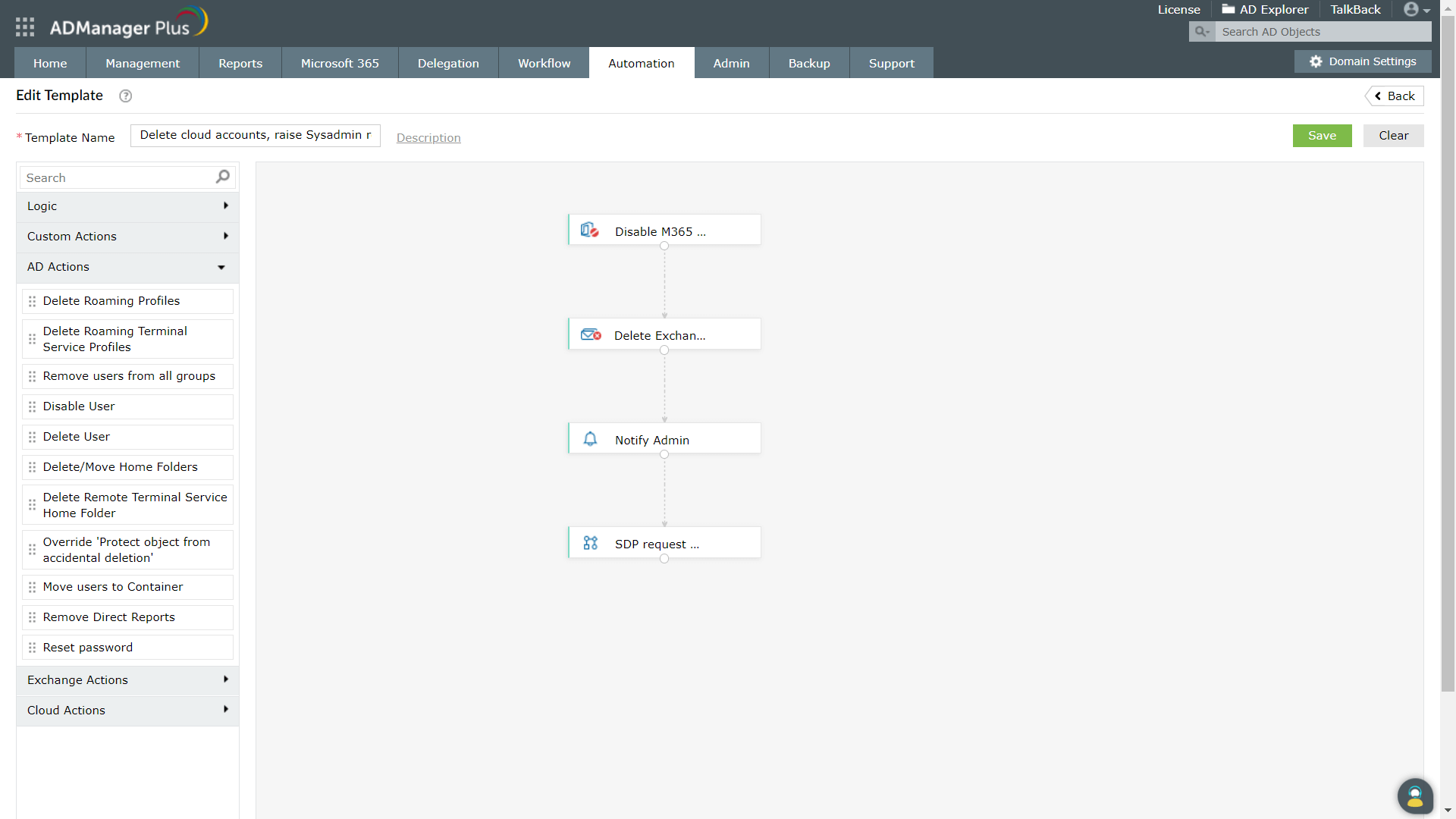- Related Products
- ADAudit Plus
- ADSelfService Plus
- EventLog Analyzer
- Exchange Reporter Plus
- AD360
- Log360
Orchestration
What is Orchestration?
Orchestration allows users to specify a sequence of tasks to be executed automatically, after a particular task is executed. The time delay between the tasks and the order of tasks to be automatically executed can be customized via the Orchestration templates and Orchestration profiles.
For example, when user accounts are de-provisioned, when an employee is no longer with the organization, all the associated accounts of the user like Microsoft 365 account, Google Workspace, Exchange, etc. will also have to be removed; their access permissions revoked and their accounts disabled; and so on. Though manually cleaning up stale accounts is time-consuming, it still has to be done as having stagnant accounts could become potential security vulnerabilities. Orchestration templates will be handy in these scenarios as you can create an automated template with different components as shown below to suit your organization's needs.

What are the components of Orchestration?
Orchestration is composed of the following components which can be added as required,
- Orchestration template: Allows you to create orchestration, webhook and notification templates for setting up an automated flow of actions. Orchestration template can be created by dragging and dropping blocks for various AD management actions, Cloud actions, Exchange actions, Webhooks and Notification that need to take place sequentially.
- Orchestration Profile: A management profile, allows you to configure the conditions under which your Orchestration templates are to be executed.
- Webhook template: A Webhook allows an application to communicate with external applications that feature Rest APIs. With ADManager Plus' webhook templates, you can create a template to configure REST API endpoints, headers, params, action type and messages, which can then be added to your orchestration templates as blocks.
- Custom scripts: Apart from the webhook templates and notification templates, you can also custom scripts as blocks onto your orchestration template.
- Logic: Logic blocks can be added to the orchestration templates either as decisions or time delay blocks. The decision blocks have the "if this, then that" functionality, while the time delay blocks allow you to configure the time delay between two subsequent actions.
- AD actions: Active Directory management actions can be added to the orchestration templates by dragging and dropping them onto the action sequence from the list of available AD action blocks.
- Action sequences: The action sequences determine the course of sequential actions that take place once a specific action is triggered. This can be custom-built by dragging and dropping blocks, in the orchestration template creation page.
The following sections will help you understand Orchestration better:
